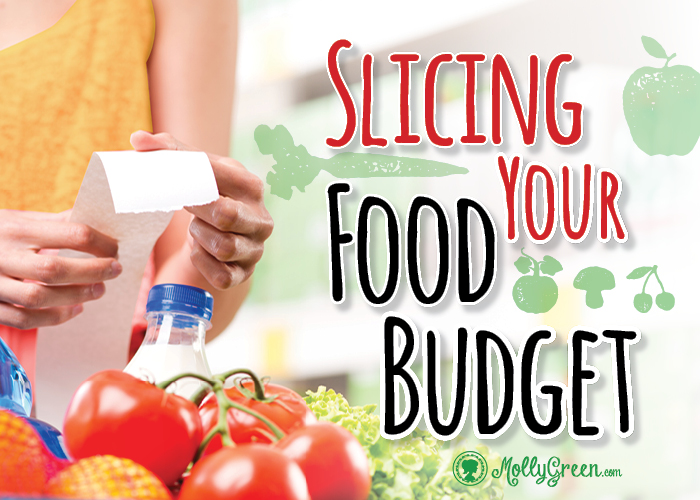By Lisa Holcomb
Can you eat healthy even on a tight budget? Yes, you can. However, when you are on a budget, grocery shopping can be a real challenge. If you are looking for how to starting eating healthy on a budget, then it can be an even bigger challenge. Here are some tips to make it easier to keep your grocery budget under control while still eating healthy.
13 Tips For How To Start Eating Healthy On A Budget
(1) Buy in season
Not only is fresh produce always going to be healthier and tastier when it’s in season, but it’s also going to be far less expensive. Fresh strawberries in December can cost twice as much as they would if purchased in August.
So, when menu planning, make sure you pick recipes that include only seasonal fresh produce.
(2) Buy frozen
Frozen produce is a great alternative to fresh if you can’t purchase in-season fresh produce. If it’s on sale, you can stock up. It also eliminates the “I forgot it was in the refrigerator and now it’s mush” problem.
(3) Do your meal planning
Fail to plan, plan to fail. Without a menu plan, you are setting yourself up for purchasing items you really didn’t need and not buying the ones you do need. How to start eating healthy on a budget involves being able to “shop your pantry and freezer” while making your meal plan so you don’t spend as much.
(4) Redefine what you think a meal is
If you think of a meal as a “meat and potato” meal, then you’ll spend more on your groceries. However, if you think of meat as an ingredient to your meal and not the main component, then you’ll open yourself up to lots of budget-friendly recipe ideas.
(5) Try vegetarian meals
I have a husband and four boys at home and trust me, going fully vegetarian would never work for us and my carnivorous males. However, I can sneak in a vegetarian meal once—twice sometimes—a week.
(6) Buy generic instead of brand names
Believe it or not, you can eat just as healthy purchasing store brand products as you would with name brand products. Some stores even have their own store brand generic products. Just as good and much cheaper.
(7) Don’t waste food
This is easier said than done, of course. However, when you plan your menus out and purchase just what you need, AND stick to the menu, then you won’t waste food.
(8) Think meal-stretching recipes
When planning your menu, think recipes that don’t use as much meat, but you can stretch further. Maybe use it for more than one meal that week or use what you need for one meal and freeze the rest for another week.
Some great meal-stretching recipes would be Red Beans and Rice, Simple Spaghetti and Sauce and Vegetarian Chili, just to name a few.
(9) Stay away from convenience foods
Not only are they usually not what we would consider healthy, but you are paying for the “convenience.” Need bread crumbs? Make your own. Homemade soups are far healthier and cost less than the store-bought canned soups.
Chop your own vegetables. Sure, it makes meal prep quicker to purchase the already sliced fresh mushrooms, but you pay for someone else to slice them for you.
(10) Shop local farmers’ markets
If you are fortunate enough to have a good farmers’ market close by, then you are fortunate indeed. Get to know the folks who are selling there and find out if you can get a discount on whatever they might have left at closing.
Many local growers don’t want to have to take the extra back home with them and are willing to sell much cheaper at closing time.
(11) Use cheaper cuts of meat
If you are on a tight budget you can still eat healthy and use less expensive meat. Look at buying and cooking a whole chicken rather than purchasing already cut chicken breast. You get a whole lot more chicken for less.
You can also do so much more with the whole chicken. Homemade chicken broth or bone broth is healthy and delicious.
(12) Think other protein sources besides meat
You can really cut down on grocery expenses if you think about using other protein sources a couple times a week. Beans, eggs, and nuts are much cheaper than meat and make a great protein source.
(13) Utilize leftovers
If you don’t have enough leftovers to serve for another full meal, then use them for lunch the next day. Soup is great to take to work or school. You can even wait 2-3 days and combine all the leftovers into one lunch meal for the family. It doesn’t really matter if it doesn’t “go together.” Set it all out for lunch and let family members decide what they want.
Cheap Healthy Meal Planning Is Possible!
It is possible to feed your family healthy meals when you are on a tight budget. How to start eating healthy on a budget really all comes down to good meal planning and a little creative thinking. Plan and follow through!
Lisa Holcomb and her husband, Will, have six children (her oldest two children are married and have babies of their own) and live near Austin, Texas, with their four boys. Lisa is co-founder of Build A Menu and is known as the “Queen of Meal Time Makeovers.” She is an author, speaker and an advocate for adoption, family nutrition, savvy grocery shopping, and family dinners.





